There is a lot of concern about brand safety on the Internet. The topic was inflamed even more ever since UK advertisers found that their ads were served alongside extremist content on YouTube. However, there are tools and best practices available to advertisers to minimize these types of incidents. Here is how Centro looks at the situation today.
What is ‘brand safety?’
The concept of ‘brand safety’ is relative to the brand in question. Different companies have different standards. For any company that executes campaigns for brands, they should have a deep understanding of a brand’s expectation of what is and what is not ‘brand safe’ content.
Is YouTube ‘safe’ for advertisers?
Yes. Centro helps brands and advertisers buy media on many sites and YouTube is a major partner of ours. We are confident that it has put in place as many safeguards as possible to ensure our ads will not appear with any malicious content. Read Google’s official statement on the matter here.
Advertisers can work with YouTube to set up exclusion targeting parameters for campaigns to ensure that content that falls within certain categories will be blocked for campaigns. Here are sample categories to consider:
- Digital Content Labels: Opt out of content rated in groups such as ‘MA’ & ‘Unrated.’
- Topic Exclusions: Exclude or do not target topics such as Politics, Social Issues and Advocacy, or more, depending on what is sensitive to a brand at any given point in time.
- Sensitive Subjects Exclusions: Opt out of content relate to tragedy & conflict and sensitive social issues.
- Content Exclusions: Opt out of targeting live streams or other similar content that’s difficult to monitor in real-time.
Nevertheless, as with any marketer interested in brand safety, advertiser should still closely monitor the content channels on which ads are appearing throughout the campaign.
What are brand-safety precautions and tools advertisers can use?
For marketers using ad-buying platforms (Centro’s or otherwise) there are actions they can take and tools they can utilize. These are:
- White-list capabilities to target only handpicked sites and apps.
- Black-list specific sites to exclude them from your campaign.
- Centro DSP already black-listed more than 10,000 sites we have found to be undesirable to our advertisers.
- Third-Party Technology Partners (e.g. comScore, Peer39, DoubleVerify) can scan pages to makes sure advertising runs on appropriate content.
- Centro will normally proactively block certain categories on every campaign. This includes, but is not limited to: adult, hate speech, torrent, disaster, etc.
- Centro’s team continually monitors campaigns to identify suspicious activity and remove it. We analyze incoming impressions to determine whether or not we want those sites/placements to be available to our customers.
We recommend utilizing a combination of these tools and actions for campaigns. Centro DSP users can access our help site for specific tips on brand safety, whitelists/blacklists, and more.
How much of brand safety is automated in a system and how much is the advertiser’s responsibility?
It is up to the marketer how they want to use the advertising tools at their disposal and they can steer clear of unsafe content if they, or the service partner they work with, follow basic safety measures.
On Centro’s ad platforms, we expect our publisher, network and exchange partners to provide a baseline level of good, fraud-free inventory. We make both proactive and reactive efforts to enforce that. Furthermore, we have curated a library of more than 1000 private marketplaces (PMPs) so that advertisers can choose to run campaigns on only the PMPs they hand-select.
We are committed to ensuring that customers can trust that they are spending campaign dollars on sites that have content that meets their specific standards.
If you have additional questions about brand-safe digital advertising, please reach out to Centro. https://zp-pdl.com/how-to-get-fast-payday-loan-online.php


